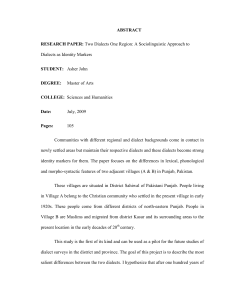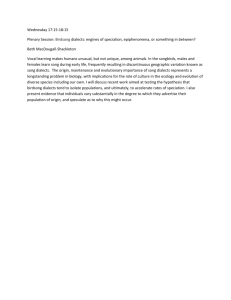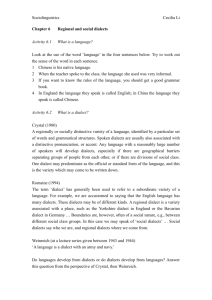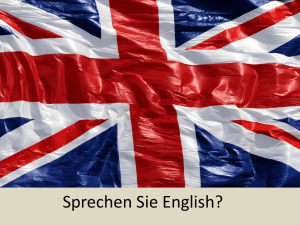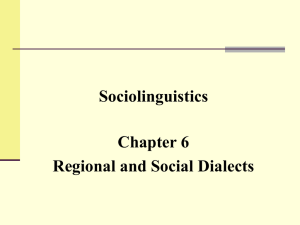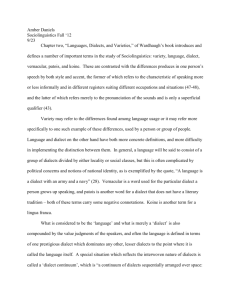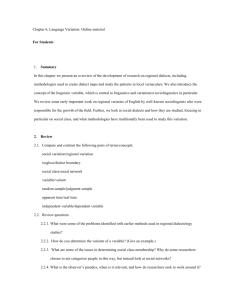COM374 Week 7 – Dialects
advertisement
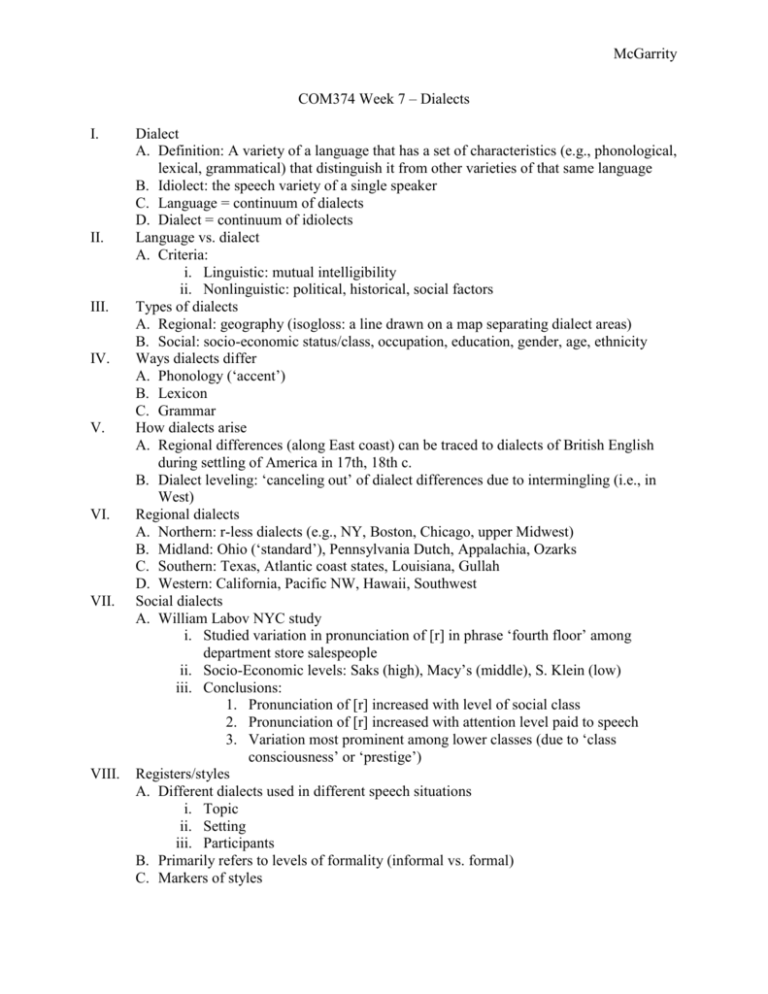
McGarrity COM374 Week 7 – Dialects I. II. III. IV. V. VI. VII. VIII. Dialect A. Definition: A variety of a language that has a set of characteristics (e.g., phonological, lexical, grammatical) that distinguish it from other varieties of that same language B. Idiolect: the speech variety of a single speaker C. Language = continuum of dialects D. Dialect = continuum of idiolects Language vs. dialect A. Criteria: i. Linguistic: mutual intelligibility ii. Nonlinguistic: political, historical, social factors Types of dialects A. Regional: geography (isogloss: a line drawn on a map separating dialect areas) B. Social: socio-economic status/class, occupation, education, gender, age, ethnicity Ways dialects differ A. Phonology (‘accent’) B. Lexicon C. Grammar How dialects arise A. Regional differences (along East coast) can be traced to dialects of British English during settling of America in 17th, 18th c. B. Dialect leveling: ‘canceling out’ of dialect differences due to intermingling (i.e., in West) Regional dialects A. Northern: r-less dialects (e.g., NY, Boston, Chicago, upper Midwest) B. Midland: Ohio (‘standard’), Pennsylvania Dutch, Appalachia, Ozarks C. Southern: Texas, Atlantic coast states, Louisiana, Gullah D. Western: California, Pacific NW, Hawaii, Southwest Social dialects A. William Labov NYC study i. Studied variation in pronunciation of [r] in phrase ‘fourth floor’ among department store salespeople ii. Socio-Economic levels: Saks (high), Macy’s (middle), S. Klein (low) iii. Conclusions: 1. Pronunciation of [r] increased with level of social class 2. Pronunciation of [r] increased with attention level paid to speech 3. Variation most prominent among lower classes (due to ‘class consciousness’ or ‘prestige’) Registers/styles A. Different dialects used in different speech situations i. Topic ii. Setting iii. Participants B. Primarily refers to levels of formality (informal vs. formal) C. Markers of styles i. Phonological 1. Casual, informal style marked by increased speech rate 2. Labov study: pronunciation of [r] greater in careful vs. casual speech ii. Lexical (continuum of words with different levels of appropriateness) 1. Jargon: specialized vocabulary of a profession or group 2. Slang (informal, lexical in nature, used for group identity, short lifespan, can become standardized, scalar) 3. Neologisms: blends, clippings, compounds, acronyms, conversions iii. Grammatical (informal style more concise, uses contractions) Study questions: Rank the following words for ‘bathroom/toilet’ on a style continuum of formality: restroom, loo, crapper, little boys’/girls’ room, john, facilities, latrine. Describe some of the speech situations in which you might use some of these words. Identify the type of neologism that each of the following computer terms exemplifies (i.e., blends, clippings, etc.): blog (a web log or diary) RAM (Random Access Memory) to bookmark (save a webpage) download/upload e-zine (electronic magazine) to flame (insult someone online) chatroom bit (binary digit) CD-ROM (Compact Disk - Read Only Memory) mod (modification, or moderator) netiquette (net etiquette) Using Labov’s study of NY [r] as a reference point, give possible reasons for why the lower and middle classes show greater variation in their pronunciation of [r] as opposed to the higher socioeconomic status groups. Why does the middle class group show the most variation of the three? Explain why dialects in the Western US are more uniform/less distinct than they are in the eastern part of the country. Discuss, using specific examples, how vocabulary can reveal facts about a person’s age, sex, education, occupation, and geographical or cultural origins.



